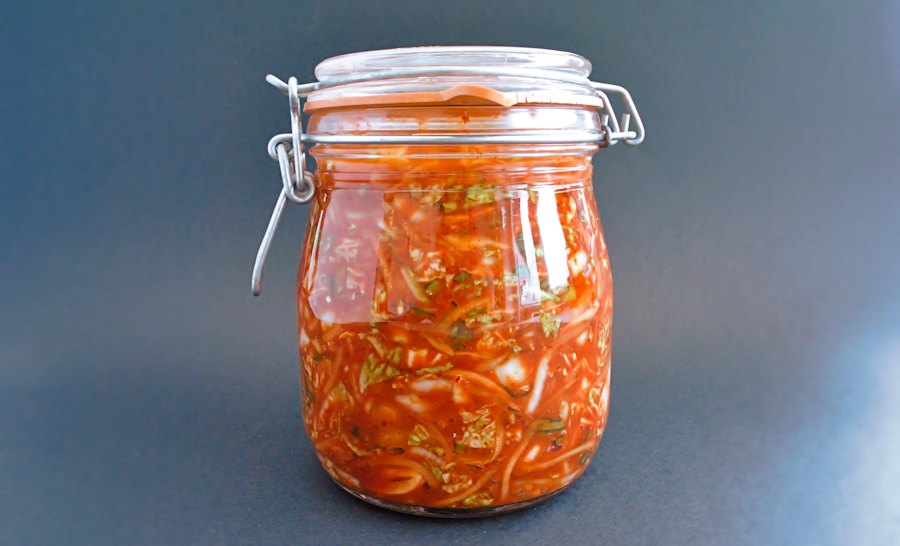
Isn’t it all about fermenting these days? Seems like folk have suddenly decided to embrace the (formerly) boring old sauerkrauts, sour cucumbers, kombucha and kefir. ‘Choc-full’ with probiotics and ‘packed’ with good bacteria, space needs to be made for all things fermented, so spiralised courgettes, quinoa and kale – move over!
I am pleased. I was raised on sauerkraut and frankly always thought it was the plainest of the plain foods, invented only to preserve vegetables better in the days of scarce refrigeration (not that I remember THOSE days - please!!!). So it’s kind of ironically fair to see faddish neophytes massaging cabbage with salt and trying to keep their kombucha at constant temperature.
Kimchi traditionally uses the Chinese leaf, or Napa cabbage, but I think ordinary green or white winter cabbage might work as well, being a bit more gutsy – even though it won’t be quite as traditional, as I understand.
Kimchi is delicious with fried rice, adding a kick and a hit of sourness to the grain. You can also make kimchi pancakes, kimchijeon, which must be a lot like Japanese okonomiyaki. I haven’t tried the former, have the latter and can happily vouch for deliciousness.
The recipe below comes from NY Times Cooking.